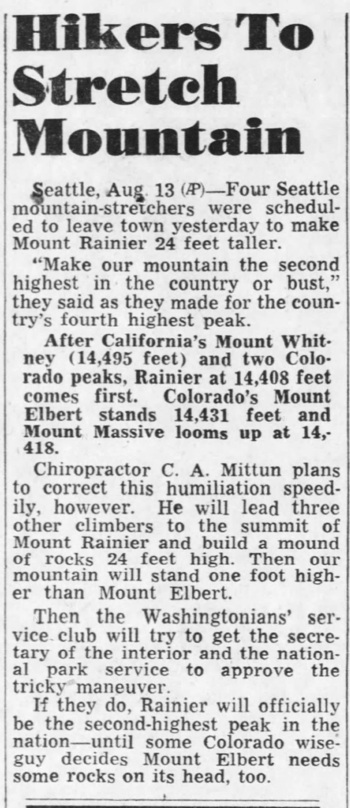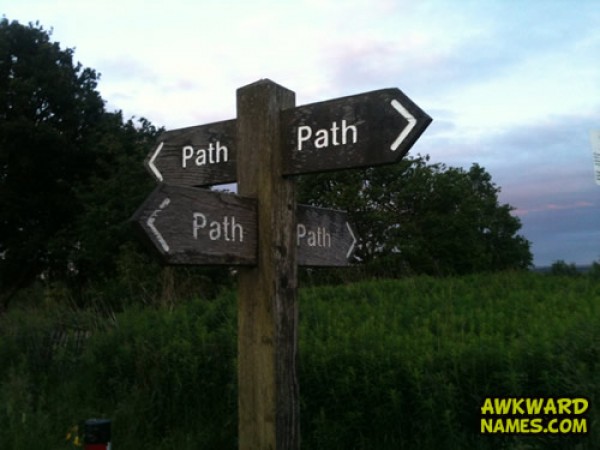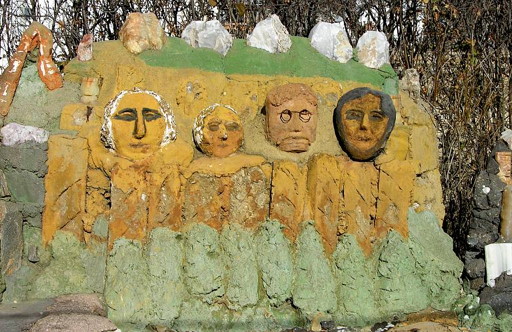Landmarks
Mrs. Wilmer Steele’s broiler house
In 1974, Mrs. Wilmer Steele's broiler house was added to the National Register of Historic Places. It has the distinction of being the only chicken coop included in the Register.
Mrs. Wilmer Steele's broiler house, located at the University of Delaware Substation near Georgetown, Delaware
The documentation shows that the folks responsible for maintaining the Register were reluctant to add a chicken coop. They initially rejected the application. But finally they were won over, convinced by the argument that it was in Mrs. Wilmer Steele's chicken coop that the modern broiler industry (i.e. breeding chickens for meat rather than for eggs) began.
More info from Wikipedia:

"Ike Long, a broiler caretaker, two of the Steele children and Mrs. Wilmer Steele in front of a series of colony houses during the pioneering days of the commercial broiler industry."
Posted By: Alex - Mon Jun 03, 2024 -
Comments (1)
Category: Animals, Farming, Landmarks
Raising Mt. Rainier
In 1948, Washington's Mt. Rainier was considered to be the fourth highest mountain in the U.S., behind California's Mt. Whitney and Colorado's Mt. Elbert and Mt. Massive. But the difference between Rainier and the Colorado mountains was only a few feet. So Seattle chiropractor (and mountain-climbing enthusiast) C.A. Mittun came up with a plan to build a 24-foot mound of rocks on top of Mt. Rainier, thereby leapfrogging it from fourth place into second.However, their plan never came to fruition. A Colorado-born park superintendent stopped Mittun and his team on their way up, telling them that their plan was illegal.
None of the articles from 1948 about Mittun's plan mentioned Colorado's Mt. Harvard, which Wikipedia lists as being four-feet higher than Mt. Rainier. So sometime between 1948 and now the relative heights of the two mountains must have been adjusted, pushing Mt. Rainier further down the list. When Alaska became a state in 1959, Mt. Rainier fell far down the list to its current spot at #17.
Incidentally, Mt. Harvard has its own history of being artificially raised. In the 1960s a group of Harvard graduates put a 14-foot flagpole on its summit in order to make it the second highest point in the contiguous United States. The flagpole stayed up for about 20 years.

Santa Cruz Sentinel - Aug 13, 1948

Hanford Morning Journal - Aug 17, 1948
Posted By: Alex - Tue Dec 19, 2023 -
Comments (4)
Category: Geography and Maps, Landmarks, 1940s
Giganticus Headicus
I recently had the chance to visit this roadside oddity in Arizona. It's located about 20 miles east of Kingman on Route 66. Artist Gregg Arnold created it in 2004, modeling it after the giant heads on Easter Island. He created it, he said, "because the place looked like it needed something like this."More info: Roadside America

Posted By: Alex - Wed Aug 24, 2022 -
Comments (0)
Category: Art, Landmarks, Sightseeing, Arizona
“The Largest Cross in the Western Hemisphere”
Another oddity that I encountered on my recent cross-country road trip was the "largest cross in the western hemisphere." It's located in Groom, Texas, just a few miles down the road from the Devil's Rope Museum (which I posted about yesterday).It was built in 1995 by Steve Thomas, a structural engineer, after he grew tired of being "faced with huge billboards along I-40 advertising XXX pornography locations." He wanted to offer the public something more wholesome instead.

The cross stands 190 feet tall, but as you approach it along the highway it looks disappointingly small because it's dwarfed by windmills in the fields around it. However, once you get right up beside it, it seems pretty big.
Referring to the cross as the largest in the western hemisphere, begs the question of where the largest cross is. According to Wikipedia, it's in Spain and is 500 feet tall.
However, more Internet research reveals that the cross in Groom isn't actually the largest in the western hemisphere, even though it's still being advertised as such (according to the pamphlet I got — see below). It was the tallest when it was built, but there are now two taller crosses in America — one in Illinois (198-feet tall) and another in Missouri (218-feet tall).

The cross is surrounded by "life-size bronze sculptures depicting the steps of Jesus to the Cross." And to the side of the cross is a life-size depiction of Calvary, where Jesus was crucified alongside two thieves.
The depiction of Calvary stands quite close to the highway. You can see the trucks and cars going by in the background. It gives the odd impression of three people being crucified along the I-40.

Overall, given that the giant cross was directly off the highway and very easy to get to, I'd recommend it as being interesting enough to visit, if you happen to be doing a roadtrip along the I-40.




Posted By: Alex - Mon Jun 06, 2022 -
Comments (2)
Category: Religion, Landmarks, Sightseeing
Don’t Look Down
A 980 foot long glass bottom suspension bridge with a lush green canyon 590 feet below. If you want to walk across its just a short trip to Hunan, China.
Posted By: Alex - Tue Sep 29, 2015 -
Comments (7)
Category: Daredevils, Stuntpeople and Thrillseekers, Landmarks, Sightseeing
World’s Largest Cuckoo Clock Contender
Sugarcreek, Ohio has what they claim is the world's largest cuckoo clock. In fact it had been on display at a couple of different venues for many years. It is quite a lovely and charming tourist attraction.
Posted By: Alex - Fri Mar 20, 2015 -
Comments (2)
Category: Art, Fey, Twee, Whimsical, Naive and Sadsack, Puppets and Automatons, World Records, Landmarks, Sightseeing
Welcome to Path
I guess it's true. If you don't know where you are going, you can get there any way you want.
I'll check back in when I decide which way to go.
Posted By: gdanea - Sun Oct 07, 2012 -
Comments (6)
Category: Landmarks
Longfellow’s Wayside Inn
Please rate this video for its boredom content, always using "Wooden Bridge Inspection" as your gold standard.
Add some extra points for the irritating traffic and nature noises in the background, and the wandering eyes of the narrators.
Posted By: Paul - Tue Jul 31, 2012 -
Comments (8)
Category: Boredom, Ineptness, Crudity, Talentlessness, Kitsch, and Bad Art, Video, Avant Garde, Landmarks, Monuments
Alternative Mount Rushmores—where are they?
Stonehenge has many imitators. For instance, there's Stonehenge II in Texas, Carhenge in Nebraska, and Fridgehenge in New Mexico.But what about Mount Rushmore? Are there similarly all kinds of alternative Mount Rushmores tucked away in obscure corners of the world? I would have thought so. After all, it's one of the most famous landmarks in the world and seems ripe for creative re-interpretation.
However, the only alternative Mount Rushmore that I'm aware of is Florence Deeble's Mount Rushmore in her rock garden in Lucas, Kansas. Am I missing something here? There must be more Mount Rushmores out there, but where are they?

Posted By: Alex - Sat Jun 02, 2012 -
Comments (6)
Category: Landmarks, Monuments, Sightseeing
Amazing and Unusual USA
Posted By: Paul - Wed Nov 04, 2009 -
Comments (2)
Category: Pop Culture, Regionalism, Travel, Landmarks, Sightseeing, Books

| Who We Are |
|---|
| Alex Boese Alex is the creator and curator of the Museum of Hoaxes. He's also the author of various weird, non-fiction, science-themed books such as Elephants on Acid and Psychedelic Apes. Paul Di Filippo Paul has been paid to put weird ideas into fictional form for over thirty years, in his career as a noted science fiction writer. He has recently begun blogging on many curious topics with three fellow writers at The Inferior 4+1. Contact Us |




